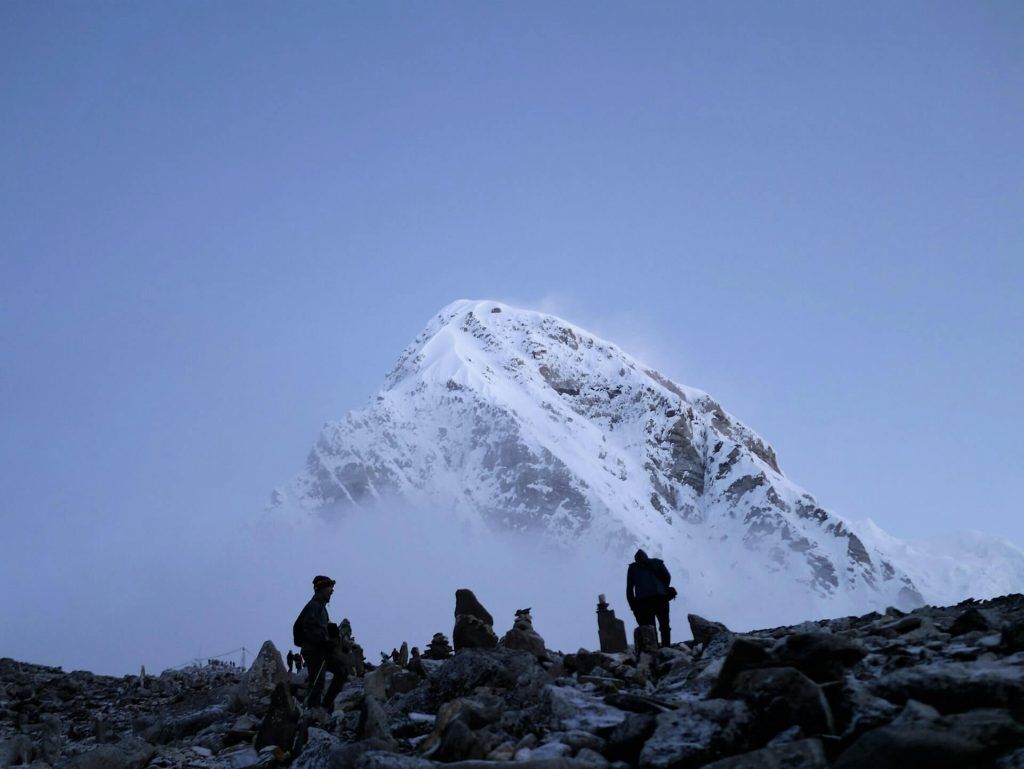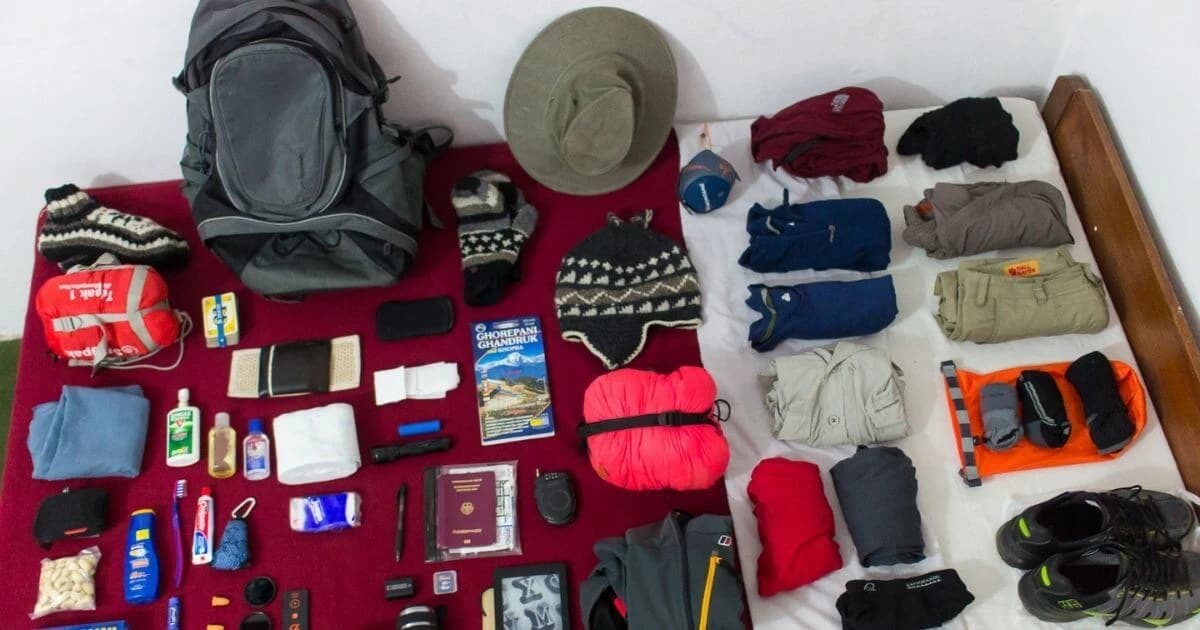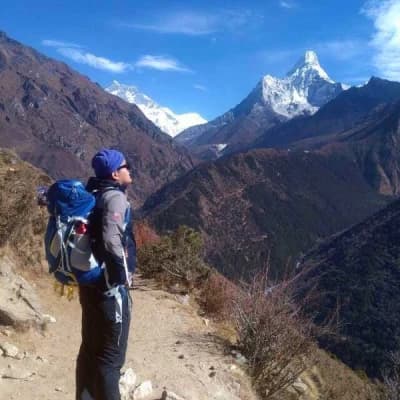Wondering what to pack for the Everest Base Camp trek? The ideal packing list for Everest might vary depending on the season and your preferences. We also know that some essential gear might slip out of your mind between the rushes of packing for Everest Base Camp. That’s where we come in, offering the sights on the best Everest Base Camp Trek backpack.
Overview of Everest Base Camp Trek
The Everest Base Camp trek is an iconic adventure that attracts trekkers and hikers worldwide. Typically, the EBC itinerary ranges from 15 to 18 days, depending on the chosen route and acclimatization day, with a difficulty level of moderate to challenging.
Expect long days of hiking, steep inclines, and high-altitude terrain. Proper acclimatization is crucial to avoid altitude sickness. Listen to your body and ascend gradually. Be prepared for unpredictable weather conditions with rain, wind, and cold temperatures.
Importance of Packing Wisely for a Trek
Pack only what you need; carrying an overloaded backpack for days can transform your trek into a hassle. An accurate pack will prepare you for unpredictable weather and potential mountain discomfort. Packing wisely means having the right gear to combat altitude sickness, stay warm in cold temperatures, and address minor injuries. Packing strategically saves you time and allows you to focus on enjoying the trek.
A well-packed bag translates to a smoother, more enjoyable trek. Knowing you have everything you need gives you peace of mind and allows you to enjoy the breathtaking scenery and cultural encounters fully.
Essential Clothing Gear for EBC Trek
No matter the gender, essential clothing and gear for the Everest Base Camp, like the outer layer, basic layer, footwear, accessories, sleeping gear, backpacks, documents, hygiene essentials, and toiletries, are some important packing lists for the Everest Base Camp Trek. Regardless of gender, the following packing items are essential for both males and females:
1. Basic-Layers
- Thermal pants: Quick-drying, breathable fabrics like merino wool or synthetic blends. Pack at least 2 for daily wear and potential washing delays.
- Thermal shirt: Choose moisture-wicking fabrics for sun protection and warmth at higher altitudes. Pack 2-3 sets.
2. Mid-Layers
- Fleece jacket: Consider both lightweight and thicker options for adjusting to changing temperatures. Pack 1 set.
- Down jacket: Crucial for providing essential warmth at higher altitudes and during colder nights. Wear 1 set.
3. Outer Layer
- Waterproof and breathable shell jacket and pants: These are your shields against rain, wind, and snow. Prioritize breathability to avoid feeling clammy while staying protected. Pack 1 set.
4. Other Clothing, Accessories, and Footwear
- Trekking pants: Pack 2 sets of convertible pants with zip-off legs to provide versatility for different weather conditions.
- Hiking T-shirts: Pack 3-4 long-sleeved or half-sleeved moisture-wicking shirts for daily wear and potential washing.
- Underwear: Bring enough breathable and moisture-wicking underwear for the trek’s duration.
- Hat: A sunhat with a wide brim and a warm beanie are essential.
- Buff or neck gaiter: Pack at least 1 to provide sun protection, warmth, and dust protection.
- Gloves: A liner pair for sun protection and a thicker pair for warmth at higher altitudes.
- Socks: Pack liner socks, thick trekking socks, and warm wool socks for foot comfort. Pack 4-5 sets in total.
Technical Gears and Equipment
Technical gear and equipment for Everest Base Camp depend upon your personal needs, day hike length and difficulty, and main backpack size.
Backpack (40-65 litres):
Large enough to carry your gear comfortably.
Consider a rain cover or waterproof liner for your backpack.
Sleeping Bag:
Rated for cold temperatures (down to -10°C or lower).
Sleeping Pad:
Insulated sleeping pad for warmth and comfort.
Trekking Poles:
Adjustable 2 trekking poles for stability and support on uneven terrain.
Headlamp: With extra batteries.
Documents
1. Identification and Travel Documents
Before packing for the Everest Base Camp trek, ensure your passport has at least 6 months of validity after your planned return date and enough blank pages for visas and entry stamps. The visa options vary based on nationality, so obtain a Nepal tourist visa. Check with the Nepalese embassy or consulate for specific requirements.
2. TIMS Card (Trekker Information Management System)
To enter the Everest Base Camp, obtain a Sagarmatha National Park permit and a Trekking Information Management System (TIMS) card. You can obtain these permits in Kathmandu or Pokhara.
3. Travel Insurance
Travel insurance is highly recommended by every travel agency, especially for high-altitude trekking, and may be mandatory for some trekking agencies.
Health and Hygiene
1. Medical/First-aid kit
- Diamox (acetazolamide) helps prevent altitude sickness. Consult your doctor before starting Diamox to discuss potential side effects and dosage.
- Over-the-counter medications like ibuprofen or acetaminophen can help manage headaches and other symptoms of altitude sickness.
- Pack a basic first-aid kit containing essential supplies like bandages, antiseptic wipes, pain relievers, and insect repellent. Consider including items specific to altitude sickness, such as nausea medication and Diamox.
- Carry portable oxygen, especially if you anticipate altitude-related issues.
2. Hygiene Essentials and Toiletries
- Pack enough toilet paper for the duration of your trek, considering potential resupply limitations. Opt for biodegradable or recycled options.
- Pack hand sanitizer to maintain hand hygiene throughout the day, especially before meals and after using the bathroom. Choose an alcohol-based sanitizer with at least 60% alcohol content.
- Opt for biodegradable soap options that minimize environmental impact.
- Choose a microfiber towel for quick drying and compact size.
- Choose a compact toothbrush and travel-sized toothpaste for easy use.
Electronics and Extras
- Carry a trail map (online or offline) for navigation.
- Opt for solar chargers or powerbanks with long battery life, as charging opportunities might be limited on the trek.
- Pack a deck of cards or travel-sized board games to share with fellow trekkers.

Everest Base Camp Packing Lists for Female
The Everest Base Camp Trek packing list for females differs slightly from the male packing list. While the core packing list remains similar, consider including thermal leggings for extra warmth under your pants, especially at higher altitudes.
Apart from the above items, female trekkers must also consider the following items.
- Sports bras (2–3): Choose supportive and comfortable sports bras specifically designed for high-impact activities like trekking.
- Underwear (6–8 pairs): Bring enough breathable and moisture-wicking underwear for the trek’s duration.
- Menstrual hygiene: Depending on your cycle and trek duration, you may need to pack menstrual cups, tampons, pads, or liners.
- Personal comfort items: Include items that enhance your sense of comfort and security on the trek, such as hand sanitizer, wet wipes, or personal medications.
Packing Tips and Tricks
- Multi-purpose clothing: Look for versatile pieces that serve multiple functions, reducing the need for additional items.
- Wear your bulkiest items: Wear your hiking boots and down jacket on the plane to save space in your backpack.
- Prioritize lightweight gear: Invest in lightweight versions of essential items like sleeping bags, trekking poles, and clothing.
- Pack heavier items closer to your back: This improves weight distribution and balance.
- Label your gear: Clearly label bags and pouches to identify essentials quickly.
- Bring a reusable water bottle: Minimize plastic waste and hydrate with a refillable bottle.
- Leave no trace: Pack biodegradable toiletries and garbage bags to dispose of waste responsibly.
Explore Everest Region's Packages
FAQs:
What equipment do I need to take to Everest base camp?
Every trekker must have trekking poles, sleeping bags, and other clothes like convertible trekking pants, hiking T-shirts, sports bras (for women), a hat (sunhat and warm beanie), a buff or neck gaiter, liner gloves, thicker warm gloves, and socks. They also need sturdy, waterproof trekking boots, camp shoes, and water purification tablets or filters. The camera and spare batteries are optional.
What sleeping bags do I need for the Everest base camp?
Everest Base Camp requires a warm and reliable sleeping bag to prepare for extreme cold temperatures (around -15°F to -20°F). Choose a sleeping bag rated at least 10°F lower than the minimum expected for extra comfort. Down or synthetic fill is also available.
How much cash do I need for the Everest Base Camp?
The cash you need for Everest Base Camp depends on factors like trek itinerary, spending habits, and currency fluctuations. Only some guest houses and lodges offer online payment. A starting point of $500-USD 700 should cover basic expenses on organized treks. The budget might be higher for independent treks based on your itinerary and spending habits.
What size day backpack for the Everest Base Camp Trek?
The ideal daypack size for Everest Base Camp depends on key factors like your packing style and the length and difficulty of your planned day hikes. If you like to travel light and only carry essentials like snacks, water, a camera, and sunscreen, a 20-25 liter pack might be sufficient. For those who prefer extra space for layers, lunch, navigation tools, etc., especially on longer or more demanding day hikes, a 25-30 liter pack is a good option.
How do you stay warm on Everest Base Camp day?
Start with a basic layer like breathable, moisture-wicking merino wool or synthetics. This pulls sweat away from your skin, keeping you dry and preventing chills. Consider layering a light fleece over a thermal top for increased insulation. A waterproof, breathable shell jacket and pants protect you from wind, rain, and light snow.
Do you need oxygen for the Everest Base Camp Trek?
Some people are more vulnerable to altitude sickness than others. If you have health conditions or ascend too quickly, you should carry supplemental oxygen for emergencies.


.webp&w=1200&q=75&dpl=dpl_2PwU5ZDv8uoJ3KrzEVbz8N547HgX)
.webp&w=1200&q=75&dpl=dpl_2PwU5ZDv8uoJ3KrzEVbz8N547HgX)
.webp&w=1200&q=75&dpl=dpl_2PwU5ZDv8uoJ3KrzEVbz8N547HgX)